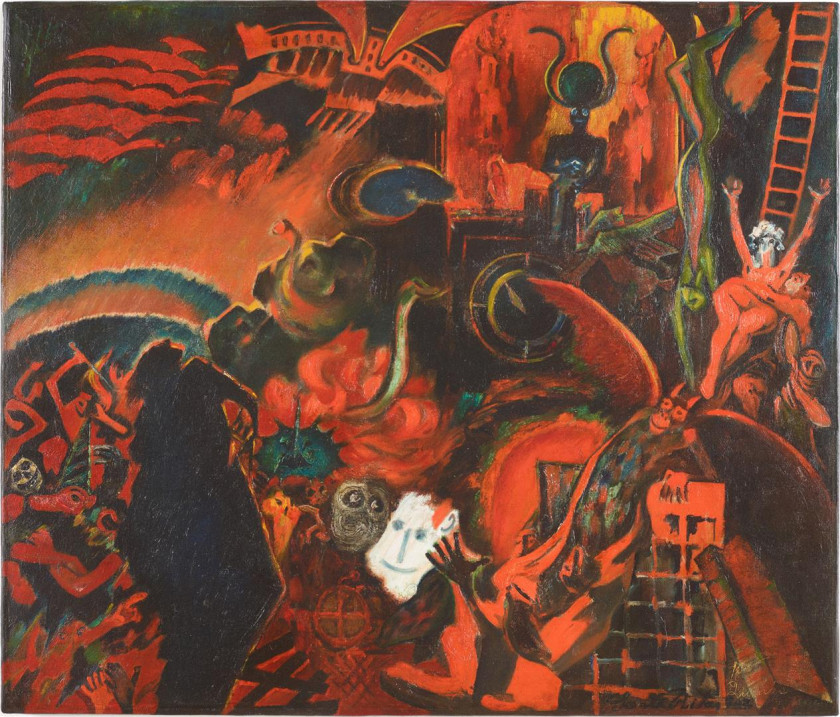Orfeu nos infernos [Orpheus in hell]
painting


1909
Oil on canvas
- 55 x 65 cm73 x 83 x 5,5 cm
This painting was known as a black and white reproduction in Portugal Futurista (1917, p.7), accompanied by the following inscription: «This painting, entitled "Orfeu nos Infernos", was painted at the age of 14 by Santa Rita Pintor, a student at the Lisbon School of Fine Arts. In the composition of the work, there is the introduction of elements, such as aeroplanes, not at all in harmony with a classic concept of the theme, being also remarkable the Mephistophelean physiognomy of the work, expressed among other things by the rebellious fact of Veloso Salgado, teacher of the Artist at the time, to be placed among the characters of his Hell ». The painting was part of the collection of the Count of Monsaraz, friend of Santa Rita Pintor, who is known to have attended the 1917 futuristic session. Exhibited in 1925 at the Salão de Outono, representing the painter in a small set of precursors that also included Amadeo de Souza Cardoso and Manuel Jardim, for decades the painting would only appear at international exhibitions (São Paulo Biennial of 1953 and 1971), only having public visibility in Portugal when it appeared at auction in 1995.
According to memories of the musician Ruy Coelho, it is known that the painting was executed in the school phase: « When he was still a student at Escola de Belas Artes in Lisbon, one day the teacher told him to paint a picture with the theme Orpheus in Hell. (…), the teacher passed by the student, looked at the work and noticed that Santa-Rita was using pink paints. Turning around, surprised, he told him that such a pink hell was impossible. Santa Rita played the teacher and asked him: what is the colour of what colour is Hell? Hell? Of course, the teacher couldn't answer him» (Diário de Notícias, 30th June 1980). The school setting is confirmed by the inscription "fifteen", usual in the evaluation processes at the School of Fine Arts, note that it is right with the evaluation of "sketch" of the 3rd year of the History Painting class, attended in early 1909 under the guidance of Veloso Salgado, this being the probable date of painting. However, by the caption of Portugal Futurista and the layers of matter, it will have been retouched by the author a few years later.
Since it did not belong to the artist, it was one of the few paintings that escaped the destruction of his work by the painter's brother, the poet Augusto de Santa Rita, at the request of Saint Rita Pintor himself before he died.
Fernando Rosa Dias